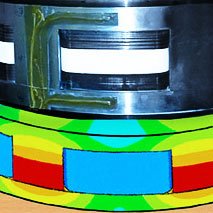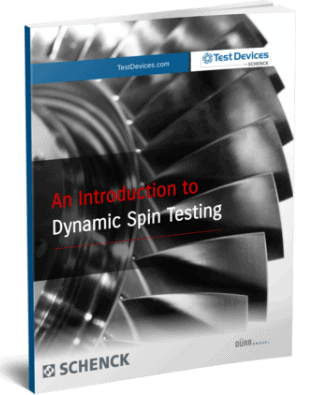Strain Survey
The Issue
Strain surveys help engineers understand how their designs can be improved to increase life and performance while reducing material costs. Strain calculations are typically done using a Finite Element Analysis (FEA) model. While FEA models are useful in estimating strain, experimental techniques are required to validate information when high-speed rotating parts are involved. This is especially important when those rotating parts include complex shapes, welds, or fillers, or parts made from composite materials.
Download Our Spin Testing Ebook
Why It Matters
Undetected strain problems can be costly in terms of system performance, personal safety and business reputation.
What’s more, identifying areas of concern in a component as early as possible in a design process can save substantial dollars. The U.S. Military stated at a conference that the cost of an unidentified problem increases from the start to the end of a program by the following multipliers:
- Found in Design = 1x
- Found in Prototypes = 10x
- Found in Certification = 100x
- Found in Field Failure = 1000x
What You Can Do
Test Devices offers comprehensive Strain Surveys of rotating parts. Information gathered in these tests can be used to analyze complex parts, understand assembly stresses and determine the behaviors of materials (including composites) when exposed to operational loads under realistic conditions. This data can be used to calibrate an FEA model. Test Devices’ service is highly cost-effective and provides the advantage of actual test data to augment the FEA model.
Download Our Spin Testing Ebook
Reasons for Strain Testing
- Calibrate/validate an FEA (Finite Element Analysis) model
- Measure deformation in complex shapes, welds, fillers, etc.
- Understand assembly stresses
- Determine behavior of materials
- Perform elastic/plastic analysis
- Calibrate strain and clamping of bolts
- Measure thermal strain superimposed on rotational strain
- Understand the stress distribution of multi-material component assemblies
Download Our Spin Testing Ebook
Advantages of Strain Survey and Failure Analysis
Empirical Data vs. Modeling: FEA software programs are quite good at modeling stress states and the resulting component deformation, but empirical testing can reveal issues resulting from factors that are not incorporated in FEA models. Test Devices Strain Surveys can gather information on areas of stress concentration that might potentially lead to failure.
Testing Composites: Composite structures are made up of individual micro-structural features whose interactions make modeling of the component difficult. A Test Devices Strain Survey can provide data on composite products and the quality of their manufacturing processes.
Elastic/Plastic Analysis: Parts spun at high speed grow as a result of the high centrifugal forces. Some of the growth is recoverable (elastic) while some is permanent (plastic). Determining the ratio of elastic to plastic growth provides data vital for determining the useful life of a part.
Strain Gauging: The clamping force of a bolt is proportional to, but not necessarily directly related to, the torque applied. As a result, it is difficult to determine. Strain gauging bolts can calibrate the effects of friction, galling, lubrication, etc., and provide a more accurate conversion of clamping force from torque.
Predicting Failure Risk: Strain surveys can provide information on local stress states that can lead to early fatigue crack initiation. This can provide valuable information on imminent failure risk.
Strain/Burst Combination: A Strain Survey can be done in conjunction with other tests, such as a burst test, where the strain can be measured accurately up to the point of destruction.
Cost-Effective: Strain surveys provide important empirical information on real-world component behavior under realistic loading conditions that augment the theoretical predictions of FEA models alone. The cost of performing a strain survey is small compared to the potential problems that might subsequently arise in manufacturing or operation. This saves money and provides data which is more dependable than that produced from a model because the analysis has been taken one step further – real information on a real part.
Test Devices’ robust equipment allows speeds all the way up to and including burst speeds. Test Devices can incorporate cycling the device under test multiple times and vary the test temperatures resulting in a Strain Survey that more accurately represents design performance.
In figure 1, sensors positioned on the device under test were used to calibrate the FEA model shown just below. A profile of the designer’s chosen range of speeds was created from the resulting data.
In another example, Test Devices was able to extrapolate the burst speed to within 100 rpm from test data generated using high elongation sensors, providing considerable savings over burst testing.









